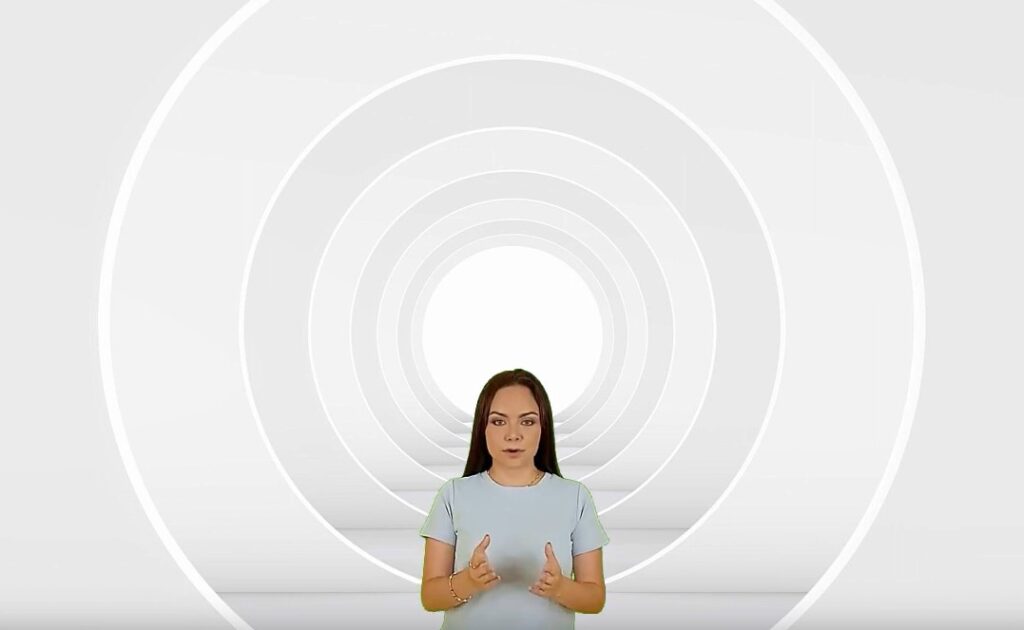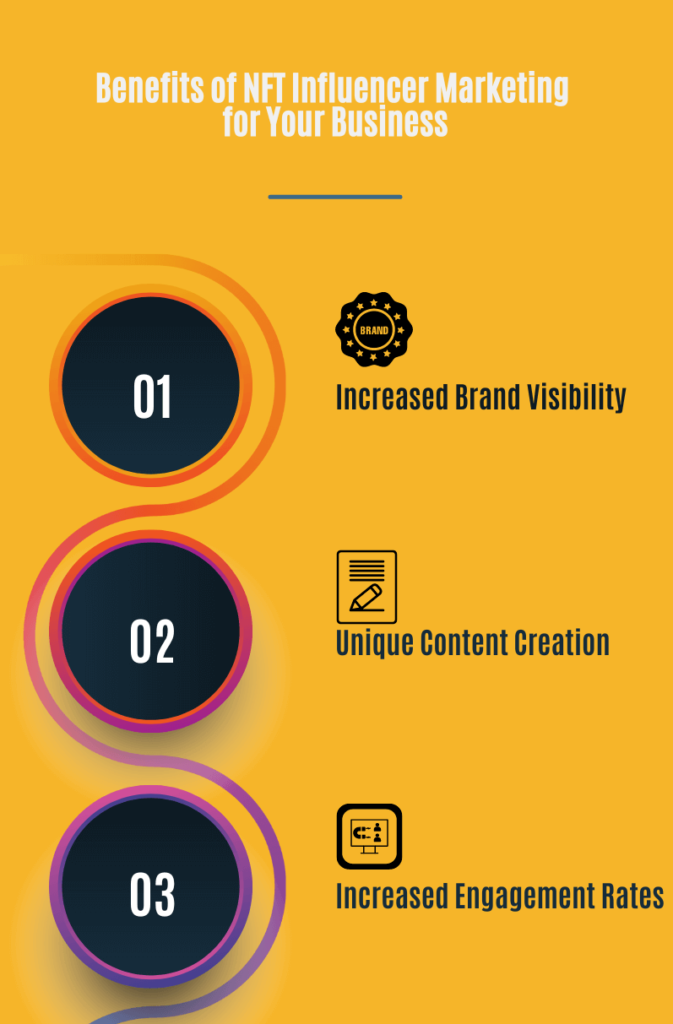NFTs, or Non-Fungible Tokens, are unique digital assets that represent ownership of physical or virtual items. They’re built on blockchain technology and use cryptographic techniques to verify the authenticity and ensure that no two NFTs are identical. Unlike other cryptocurrencies, NFTs cannot be exchanged for one another as each token is a distinct asset with its own individual identity. It makes them perfect for use in influencer engagement – they can be used as rewards or incentives for followers to engage more actively with an influencer’s content.
For example, an influencer may create limited edition NFT artwork featuring their signature logo, which fans can purchase in exchange for loyalty points earned through watching videos or participating in activities related to the influencer’s brand. Additionally, some platforms have begun allowing users to stake their tokens on specific pieces of content from an influencer; this adds another layer of engagement and encourages fans to remain active over time.

Table of Contents
Who is an NFT Influencer?
NFT influencers are digital content creators who use the blockchain to produce, store and distribute non-fungible tokens (NFTs). They leverage their influence, often from social media followers or subscribers, to promote NFTs and raise awareness about them. Many influencers have been instrumental in introducing new audiences to the world of NFTs, creating a wave of excitement around them.
NFT influencers may be involved in projects related directly to NFTs, such as creating artwork for sale on several platforms or offering educational content about how people can buy and sell these assets. Some also work with brands or companies on marketing campaigns related to NFTs; this could involve anything from helping spread awareness about a specific project to promoting an upcoming launch.
In addition, many NFT influencers participate in community initiatives such as participating in online discussions about crypto art or hosting panel discussions at conferences. It helps build relationships with fellow members of the crypto space, which can lead to further collaborations down the road. By being proactive within the community, they help create an environment where more people feel comfortable exploring what it has to offer.
What is NFT Influencer Marketing?
NFT influencer marketing is an emerging strategy that uses non-fungible tokens (NFTs) to create and promote brand awareness through influencers. NFTs are digital assets, such as art, that are stored on a blockchain and can be tracked, authenticated and exchanged for real-world value. By leveraging the power of social media influencers, brands can use NFTs to reach their target audience more engagingly than traditional methods. Through the use of NFTs, brands can create unique experiences for their customers and build relationships with them over time. For example, some brands have used NFTs to reward their followers with exclusive content or access to special events. It helps strengthen customer loyalty while also driving incremental sales. In addition, by using NFT influencer marketing campaigns, brands can create viral buzz around their products or services, leading to increased industry visibility.
Influencer’s Role in NFT Marketing
NFT influencers have become an essential part of NFT marketing in recent years. They are often the most visible and vocal proponents of new NFTs, and they bridge the gap between creators, developers, and buyers. Influencers can be used to highlight an asset’s exclusivity or unique features, introduce new projects onto the scene, or stir up excitement for a particular NFT.
The rise of decentralized finance (DeFi) has also significantly increased NFT influencer involvement. Not only do these influencers promote individual assets themselves but also the larger DeFi ecosystem as a whole. This helps to drive further adoption by introducing key concepts like decentralization and non-fungibility to audiences that may not be intimately familiar with them yet. Additionally, their presence can serve as both a source of credibility and trust for users who are just getting started with DeFi protocols — something which is especially important given its volatile nature.
Finally, many NFT influencers have developed relationships with projects and platforms over time, making it easier to create meaningful partnerships that benefit everyone involved — from the project itself to its potential users — while validating industry trends simultaneously. As such collaborations continue to gain traction in 2021 and beyond, we should expect even more individuals entering into this space to take advantage of all that it has to offer businesses looking for quality marketing exposure.
Step-by-Step Process of NFT Influencer Marketing
1. Identifying Suitable Influencers: Before launching an NFT influencer marketing campaign, it is important to identify suitable influencers that fit the brand’s target audience. Brands should look for influencers who have a larger reach and influence in their niche, as well as those who have previously been successful in promoting other NFTs. It will help ensure that the campaign reaches the right people and has a greater impact.
2. Setting Goals & Objectives: Once suitable influencers are identified, businesses should set clear goals and objectives for their NFT influencer campaigns, including metrics such as the number of sales or engagement rate. It will give them an idea of how successful the campaign was and if it achieved its desired outcome. Businesses should also decide on what type of compensation they would like to offer to the influencers involved in their campaigns (monetary or some form of reward).
3. Launching & Monitoring Campaign: Once all preparations are made, businesses can confidently launch their NFT Influencer Marketing campaigns knowing that they have done everything they need to succeed. During this phase, businesses should monitor their campaigns closely, making sure that all messages are going out effectively and tracking any changes in engagement rates or sales numbers over time so that they can adjust strategies if needed.
Analyzing an Influencer’s Past in NFT Marketing
When evaluating an influencer’s history in NFT marketing, it is important to consider their experience and track record in the space. Analyzing an influencer’s past performance can provide valuable insights into their ability to successfully promote and market an NFT-related product or service.
To begin with, examine their portfolio of work related to NFTs; look for quality content that demonstrates the influencer’s ability to create engaging, informative pieces that will help spread awareness about your product or service. Additionally, review any statics they may have shared from previous campaigns. This kind of data can be immensely helpful in understanding how effective a given campaign was and what impact the influencer had on its success.
Finally, take a look at feedback from brands and organizations that have worked with them in the past; this should give you a good indication of whether they are experienced and capable enough to manage your project. By thoroughly assessing an influencer’s background in NFT marketing before committing to any agreement, businesses can ensure they make informed decisions when selecting potential partners for their campaigns.
Benefits of NFT Influencer Marketing for Your Business
NFT influencer marketing has the potential to be incredibly effective for businesses looking to engage with their consumers innovatively and uniquely. With NFTs, businesses can engage with influencers to create a memorable and captivating
customer experience. Here are some of the key benefits of NFT influencer marketing:
1. Increased Brand Visibility:
Using well-known and influential figures in your campaigns can help increase your brand visibility on a massive scale. Influencers have large social media followings that businesses can tap into and influence – creating more awareness around the brand or product being promoted.
2. Unique Content Creation:
Influencers can take the content created through their partnerships with brands and turn it into something truly unique by leveraging NFT technology. Not only does this help distinguish your content from other competitors, but it also allows you to gain more traction on social media as people share these exclusive pieces of digital art associated with your brand or product.
3. Increased Engagement Rates:
As mentioned before, influencers’ large following means increased engagement rates when they share content associated with your business or product – leading to higher conversion rates from viewers who may not have even heard about you before! This type of engagement is invaluable for any business looking to stand out amongst its competition and reach its target audience effectively.
Steps to Choose the Best NFT Influencer for Your Business
Once you know what type of influencer to target and have identified potential candidates, it’s time to compare and evaluate them. Here are the steps to follow:
1. Research their audience:
Take a look at each influencer’s profile, recent posts, and follower count – not just on NFT platforms but other social media accounts too. It will give you an idea of who is following them, what topics they are interested in, and how engaged their followers are.
2. Analyze their performance:
Ask yourself questions like – What kind of content does the influencer produce? How many views do their videos get? How frequently do they post? Do people comment or share their posts? Do they use any specific hashtags that could benefit your campaign?
3. Check out reviews from other brands:
Look for feedback from companies that have worked with the same influencer before making your decision. Consider factors such as cost efficiency, professionalism, and attitude towards deadlines to decide if this particular influencer is right for your campaign goals.
4. Reasonable budget:
Develop a reasonable budget for engagements with each influencer based on their influence size and what type of engagement you require them to provide (e.g., sponsored posts versus custom content). Negotiate fair compensation that meets both parties’ needs while also considering any additional costs, such as production fees or travel expenses, for the collaboration agreement to be successful.
Once you have identified the right influencer, reach out to them directly. Make sure you research the influencer before contacting them so that you can frame your email so that they will be interested in helping you out.
5. Monitor the Results:
After the alliance is established, you must monitor the results. It could involve keeping an eye on brand awareness, sales, and engagement. Use this information to assess the partnership’s performance and make changes for upcoming campaigns.
Creative Uses of NFTs
NFTs can be used creatively, from monetizing online content and giving fans exclusive rights to the artwork, music, videos and more. It’s an effective way for influencers to engage their followers while capitalizing on the potential of the digital asset market. NFTs have enabled creators to take their works to the next level, offering access to a new world of opportunities.
Utilizing NFTs is not limited to artwork or audio; they can also be used as unique rewards for loyal followers or customers. For example, companies could offer exclusive collectables representing specific milestones or achievements related to their products/services.
These could range from tokens commemorating major updates or events such as product launches or even customized items relevant to a given community – like special avatars or virtual experiences with key company team members.
Lastly, influencers can use NFTs as a tool for fundraising initiatives, allowing supporters and donors access to rewards such as rare collectables, which are only available through donation programs – creating an incentive for people who want something extra when supporting causes they believe in.
Different Influencer marketing Strategies for NFT’s

1. Leverage existing relationships:
One of the most effective influencer marketing strategies for NFTs is to leverage existing relationships. Brands can identify influential figures in their industry and approach them about sharing content featuring NFTs. This strategy leverages the built-in trust between these influencers and their followers, creating a powerful connection that encourages followers to make purchases based on their recommendations.
2. Collaboration:
Another effective influencer marketing strategy is collaborating with creators to produce exclusive content around NFTs. It offers an opportunity for both parties to promote the product while taking advantage of each other’s networks. For example, a brand could collaborate with a YouTuber or streamer to produce exclusive videos featuring the NFT and share them across their respective channels for maximum impact.
3. Incentivizing influencers:
Brands should consider incentivizing influencers by offering rewards such as commission on sales of featured products or special discounts for subscribers who purchase those products through specific links shared by influencers. It helps create an additional layer of motivation for influential figures to promote certain NFTs over others, further boosting sales potential within that niche market segment.
4. Clear expectations:
Another strategic tactic when planning NFT influencer marketing campaigns is setting clear expectations about deliverables, such as content creation schedules, payment terms, and performance metrics. It will help keep all parties accountable throughout the campaign and ensure that everyone understands what is expected from them to achieve their desired goals.
5. Use of Third-party tools:
Finally, leveraging analytics tools like Google Analytics or other third-party services will allow businesses to track campaign performance in real-time and make informed decisions about which elements are working best so they can optimize accordingly going forward.
6. Working with the right influencer:
Businesses need to identify the right influencers for their campaigns. It means researching what types of content they create and how large their following is before partnering with them. Brands should also consider working with multiple influencers on any given campaign, as this will help maximize reach and engagement among different demographics. Additionally, partnering with micro-influencers with smaller followings but highly engaged audiences can be an effective way for brands to gain authenticity for their campaigns and save costs on larger deals with more renowned influencers.
Advantages of NFT Engagement
NFTs offer a great way for influencers to engage with their audiences on a deeper level. By creating rare, one-of-a-kind digital collectibles that fans can purchase and own, influencers create an exclusive experience for their most devoted supporters. NFTs can also be used to reward loyalty, incentivize participation in challenges or giveaways, and recognize special achievements.
Since NFTs are built on blockchain technology, they provide unparalleled security and trustworthiness; buyers know exactly what they’re purchasing and completely own the asset. Purchasing an NFT is also simple and fast – buying an asset from any device with an internet connection takes only a few clicks. It makes it easy for influencers to create innovative experiences that involve virtual goods like limited edition designs or exclusive access to content or events.
Finally, NFT engagement allows influencers to tap into new revenue streams while simultaneously providing more valuable experiences for their audiences. By monetizing digital assets through tokenization, creators can directly reward their most enthusiastic fans and increase brand awareness and exposure among potential new followers.
Challenges with NFT Engagement
One of the main challenges with NFT engagement is figuring out how to create a thriving secondary market. Many influencers are hesitant to invest in NFTs due to the lack of a clear market for their collection and the fact that it may be difficult for them to recoup their investments. In addition, there is no guarantee that any particular influencer will successfully sell their NFTs on the secondary market, which can be a deterrent for those looking to engage in this type of activity.
Another challenge associated with engaging with influencers and NFTs is ensuring they comply with current laws. As regulations around digital assets continue to evolve, influencers and their partners need to stay up-to-date on all relevant legal requirements. Additionally, many platforms have limits or restrictions on transactions involving digital assets such as NFTs, so this needs to be taken into account when creating an engagement strategy.
Finally, it can be difficult for brands and companies to find reliable influencers who are willing or able to promote their brand through the use of NFTs. It’s important that potential partners thoroughly research potential collaborators before entering into any agreements in order to ensure both parties get what they need out of the partnership.
The Cost of NFT Influencer Marketing Services
NFT influencer marketing services are becoming increasingly popular and sought after as a way to reach target audiences. Businesses can gain access to the latest trends, strategies, and opportunities in the digital world through this type of marketing. With NFT influencer marketing, businesses can tap into an engaged audience that is ready and eager to take action based on their recommendations. However, there is a cost associated with these services that must be considered before making any commitments.
The cost of NFT influencer marketing services will depend on a few factors, such as the size of your campaign, the scope of work required for it, and the platform you’re using for promotion. For example, you’ll likely incur more costs if you want an influencer with millions of followers since they command higher fees than smaller influencers do. Additionally, platforms like Instagram may come at a higher price than Twitter due to its larger user base. Lastly, depending on your goals and objectives for each campaign, you’ll need to pay additional fees for specialized tasks such as content creation or analytics support, which can add up significantly over time.
Conclusion:
Once brands have taken the time to understand the current trends and possibilities of NFTs, they can begin utilizing them in creative ways to engage influencers. By finding inventive ways to leverage NFTs, companies can create powerful partnerships with one or multiple influencers that help unlock their potential and generate organic interest in their product or service. It can range from exclusive NFT drops for influencer fan’s collaborations with digital artists, or even providing influencers with unique opportunities that incentivize them to produce their own content.
Furthermore, by integrating NFTs as a form of payment for influencer services and campaigns, brands can reduce costs associated with traditional payment methods while ensuring both parties are satisfied with the outcome. It opens up possibilities for companies on any budget size who are looking to make connections while avoiding the complexities that come along with other forms of currency-based transactions.
By taking advantage of the opportunities presented by effectively leveraging NFTs, businesses can easily build trust between themselves and influencers while simultaneously unlocking their full potential within the industry.
About the Author:
Vishaka Harare works as an associate in the field of digital marketing. She likes to write about Digital Marketing and related topics.





